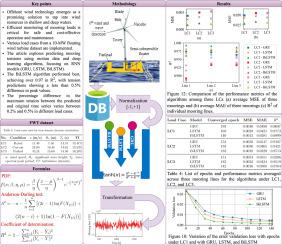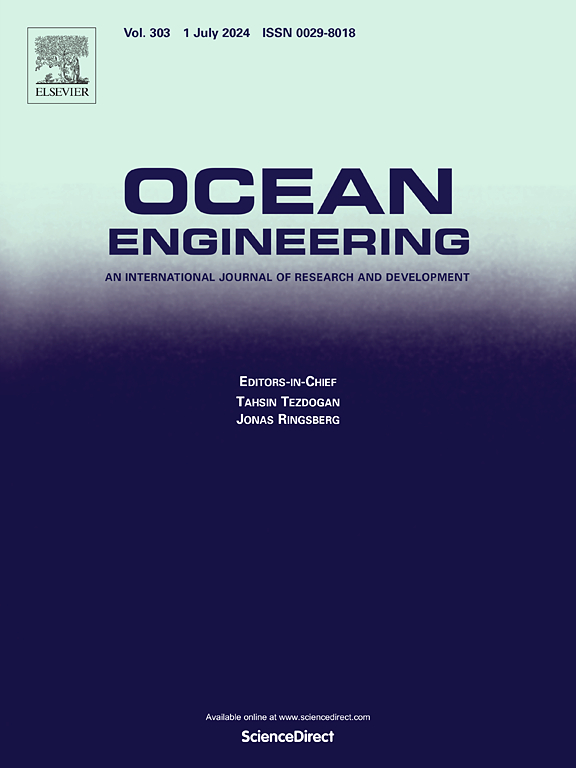Prediction of mooring dynamics for a semi-submersible floating wind turbine with recurrent neural network models
IF 4.6
2区 工程技术
Q1 ENGINEERING, CIVIL
引用次数: 0
Abstract
Offshore wind technology emerges as a promising solution to tap into wind resources in shallow and deep waters. For floating wind turbines, mooring systems provide station-keeping functionalities. Efficient monitoring of mooring loads is critical for safe and cost-effective operation and maintenance. As direct measurement of the dynamic mooring line tension is expensive, alternative means are needed. To this end, this article focuses on predicting mooring tensions based on accessible motion data of the floating platform and proposes utilizing deep learning algorithms, i.e., recurrent neural networks (RNNs). We selected three RNN algorithms: Gated Recurrent Units (GRU), Long Short-Term Memory (LSTM), and Bidirectional LSTM (BiLSTM). These algorithms were trained with various load cases of a 10-MW floating wind turbine and their efficacy was assessed using unseen data. Among the three algorithms, the BiLSTM algorithm performed best, achieving of more than 0.97 under various load conditions. Further, a statistical assessment of the tension time series demonstrates an excellent agreement between the predicted and the measured mooring line tensions with a percentage difference in the peak tension of less than 0.5%. The outcomes of this paper contribute to real-time prediction and structural health monitoring of floating wind turbines.

利用递归神经网络模型预测半潜式浮动风力涡轮机的系泊动力学特性
近海风能技术是利用浅水和深水风能资源的一种前景广阔的解决方案。对于浮式风力涡轮机而言,系泊系统具有固定功能。有效监测系泊载荷对于安全、经济高效地运行和维护至关重要。由于直接测量动态系泊线张力的成本较高,因此需要采用其他方法。为此,本文将重点放在根据浮动平台的可访问运动数据预测系泊张力上,并建议使用深度学习算法,即循环神经网络(RNN)。我们选择了三种 RNN 算法:门控递归单元(GRU)、长短期记忆(LSTM)和双向 LSTM(BiLSTM)。这些算法使用 10 兆瓦浮动风力涡轮机的各种负载情况进行训练,并使用未见数据对其功效进行评估。在这三种算法中,BiLSTM 算法表现最佳,在各种负载条件下的 R2 均超过 0.97。此外,对张力时间序列的统计评估表明,预测的系泊线张力与测量的系泊线张力非常一致,峰值张力的百分比差异小于 0.5%。本文的成果有助于浮式风力涡轮机的实时预测和结构健康监测。
本文章由计算机程序翻译,如有差异,请以英文原文为准。
求助全文
约1分钟内获得全文
求助全文
来源期刊

Ocean Engineering
工程技术-工程:大洋
CiteScore
7.30
自引率
34.00%
发文量
2379
审稿时长
8.1 months
期刊介绍:
Ocean Engineering provides a medium for the publication of original research and development work in the field of ocean engineering. Ocean Engineering seeks papers in the following topics.
 求助内容:
求助内容: 应助结果提醒方式:
应助结果提醒方式:


